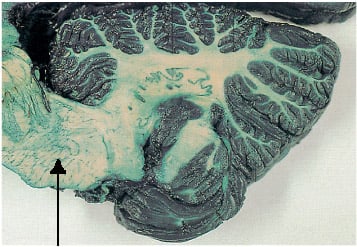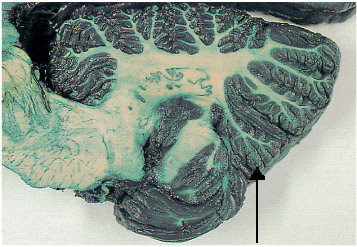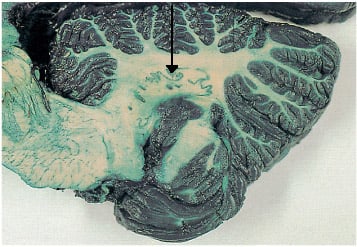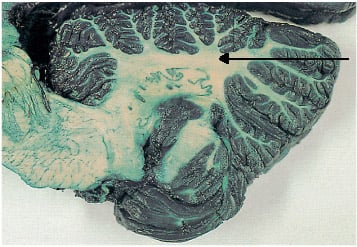The Ultimate Quiz On Cerebellum
(204).jpg)
The cerebellum receives information from the sensory systems, the spinal cord, and other parts of the brain and then regulates motor movements. Damage to the cerebellum can lead to loss of coordination of motor movement or the inability to perform rapid alternating movement. Take the ultimate quiz on cerebellum below and learn more about it.
- 1.
The cerebellum is the largest part of the _________.
- A.
Forebrain
- B.
Midbrain
- C.
Hindbrain
- D.
Spinal cord
- E.
Myelencephalon
Correct Answer
C. HindbrainExplanation
The cerebellum constitutes the largest part of the hindbrain. (http://www.bartleby.com/107/187.html)Rate this question:
-
- 2.
The cerebellum originates from the dorsal aspect of the brain stem and overlies the ______ ventricle.
- A.
Lateral ventricle
- B.
Midline ventricle
- C.
Third ventricle
- D.
Fourth ventricle
Correct Answer
D. Fourth ventricleExplanation
The cerebellum constitutes the largest part of the hindbrain. It lies behind the pons and medulla oblongata; between its central portion and these structures is the cavity of the fourth ventricle. (http://www.bartleby.com/107/187.html)Rate this question:
-
- 3.
Three fiber bundles called peduncles connect the cerebellum to the brain stem. On these tracts, information runs in both directions, with all messages sent and received by the cerebellum traveling on these fibers. Which of the below is not one of the three cerebellar peduncles?
- A.
Superior
- B.
Middle
- C.
Inferior
- D.
Flocculonodular lobe
Correct Answer
D. Flocculonodular lobeExplanation
The flocculonodular lobe is not one of the three cerebellar peduncles. The cerebellar peduncles are fiber bundles that connect the cerebellum to the brainstem, allowing for the transmission of information in both directions. The three cerebellar peduncles are the superior, middle, and inferior peduncles. The flocculonodular lobe, on the other hand, is a region of the cerebellum that is involved in balance and eye movement control, but it is not one of the peduncles.Rate this question:
-
- 4.
Damage to the cerebellum does not cause disorders of...
- A.
Movement
- B.
Equilibrium
- C.
Posture
- D.
Motor learning
- E.
Paralysis
Correct Answer
E. ParalysisExplanation
Because of this fine-tuning function, damage to the cerebellum does not cause paralysis, but instead produces disorders in fine movement, equilibrium, posture, and motor learning.[2] (http://en.wikipedia.org/wiki/Cerebellum)Rate this question:
-
- 5.
The functions of the cerebellum are entirely motor and it operates at an ___________ level.
- A.
Conscious
- B.
Unconscious
Correct Answer
B. UnconsciousExplanation
The functions of the cerebellum are entirely motor and it operates at an unconscious level. It controls the maintenance of equilibrium (balance), influences posture and muscle tone, and coordinates movement.Rate this question:
-
- 6.
The vermis is...
- A.
Thin structure that separates the two hemispheres of the cerebellum.
- B.
A structure that receives proprioceptive input from the spinal cord and controls the anti-gravity muscles of the body.
- C.
The newest part of the cerebellum.
Correct Answer
A. Thin structure that separates the two hemispheres of the cerebellum.Explanation
The vermis is a midline structure within the cerebellum that runs longitudinally, dividing it into two symmetrical hemispheres. It plays a crucial role in coordinating and integrating motor movements and balance.Rate this question:
-
- 7.
The folds of the cerebellum are called...
- A.
Vermis
- B.
Flocculi
- C.
Dentate
- D.
Purkinje
- E.
Folia
Correct Answer
E. FoliaExplanation
The surface of the cerebellum is highly convoluted, the folds, or folia, being oriented approximately transversely.
(http://www.neuroanatomy.wisc.edu/cere/text/P4/folia.htm)Rate this question:
-
- 8.
The fissures of the cerebellum are landmarks that are used to divide it anatomically into _____ lobes.
- A.
One
- B.
Two
- C.
Three
- D.
Four
- E.
Five
Correct Answer
C. ThreeExplanation
Some of these fissures are landmarks that are used to divide the cerebellum anatomically into three lobes.Rate this question:
-
- 9.
Anatomically, the cerebellum is divided into what three lobes?
- A.
Anterior, posterior and flocculonodular
- B.
Lateral, medial, posterior
- C.
Inferior, posterior and flocculonodular
- D.
Superior, inferior and the primary fissure
Correct Answer
A. Anterior, posterior and flocculonodularExplanation
Anatomically, the cerebellum is divided into anterior, posterior and flocculonodular lobes.Rate this question:
-
- 10.
The flocculus and nodule together form the...
- A.
Anterior lobe
- B.
Posterior lobe
- C.
Posterolateral fissure
- D.
Flocculonodular lobe
Correct Answer
D. Flocculonodular lobeExplanation
On the superior surface, the deep primary fissure separates the relatively small anterior lobe from the much larger posterior lobe. On the underside, the conspicuous posterolateral fissure demarcates the location of small regions of the hemisphere (the flocculus) and vermis (the nodule), which together form the flocculonodular lobe.Rate this question:
-
- 11.
The cerebellum basically consists of an outer layer of grey matter called the __________ ______.
Correct Answer
cerebellar cortex
cerebellarcortex
cerebelar cortexExplanation
The cerebellum basically consists of an outer layer of grey matter called the cerebellar cortex.Rate this question:
- 12.
The cerebellum possess an inner core comprised of _____ ______.
Correct Answer
white matter
whitematter
wite matterExplanation
The correct answer is "white matter". The cerebellum is a region in the brain that contains an inner core made up of white matter. White matter refers to the bundles of nerve fibers that are coated in myelin, a fatty substance that helps in the transmission of signals between different regions of the brain. These nerve fibers allow for communication and coordination of movements within the cerebellum and between the cerebellum and other parts of the brain.Rate this question:
- 13.
What structure is the arrow pointing to?
- A.
Dentate nucleus
- B.
White matter
- C.
Pons
- D.
Cerebellar cortex
Correct Answer
C. PonsExplanation
The arrow is pointing to the pons.Rate this question:
-
- 14.
What structure is the arrow pointing to?
- A.
Dentate nucleus
- B.
White matter
- C.
Pons
- D.
Cerebellar cortex
Correct Answer
D. Cerebellar cortexExplanation
Cerebellar cortexRate this question:
-
- 15.
What structure is the arrow pointing to?
- A.
Dentate nucleus
- B.
White matter
- C.
Pons
- D.
Cerebellar cortex
Correct Answer
A. Dentate nucleusExplanation
Dentate nucleusRate this question:
-
- 16.
What structure is the arrow pointing to?
- A.
Dentate nucleus
- B.
White matter
- C.
Pons
- D.
Cerebellar cortex
Correct Answer
B. White matterExplanation
White matterRate this question:
-
Quiz Review Timeline +
Our quizzes are rigorously reviewed, monitored and continuously updated by our expert board to maintain accuracy, relevance, and timeliness.
-
Current Version
-
Mar 29, 2024Quiz Edited by
ProProfs Editorial Team -
Mar 12, 2010Quiz Created by
Jpbtech
 Back to top
Back to top






